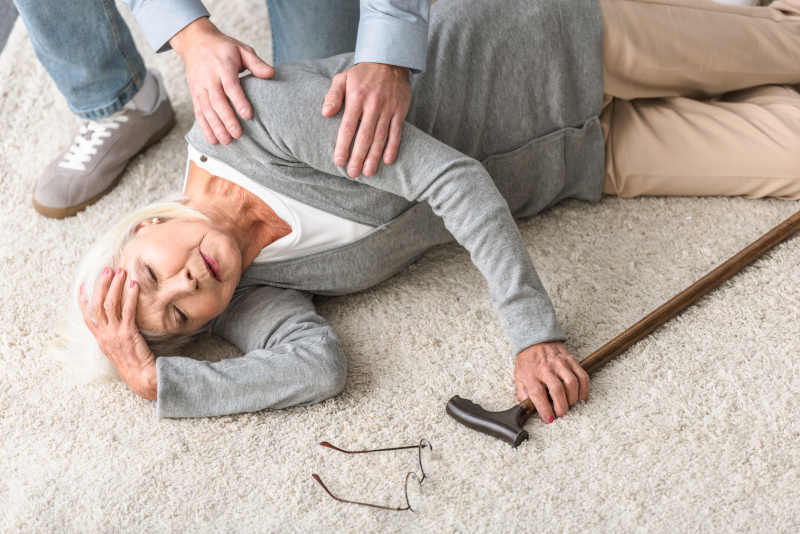There is more to falls than just bumps and bruises. For senior people, falls are the main reason for both fatal and non-fatal injuries. The U.S. Centers for Disease Control and Prevention estimates that an older adult needs emergency room treatment for a fall every 11 seconds and that they die from falls every 19 minutes.
Falls can have a significant impact on your quality of life even if there are no serious injuries. A growing proportion of senior citizens are afraid of falling because of the negative consequences. As a result, elders unduly restrict their activities and social interactions. Further physical deterioration, sadness, social isolation, and a sense of helplessness may follow from this.
Falling, however, is not always a given. The majority of falls may actually be avoided, and you have the authority to lower geriatric fall risks. You may prevent falls by exercising, taking care of your prescriptions, getting your vision examined, and making your home safer.
We’re debunking common misconceptions about elderly fall hazards so you can have the knowledge you need to safeguard yourself and your loved ones.
Myths About Senior Falls
1. Myth: It’s not me who falls; it’s other people
Fact: Many people believe they won’t experience falls. But in actuality, everyone is in danger. Every year, one in four Americans 65 and older fall in the US. No one is immune, but you may take precautions to keep your family and yourself safe.
2. Myth: It’s common for people to trip and fall as they age
Fact: Although falling is undoubtedly more likely among older people, it is not a given. You may lower the risk of elderly falls by engaging in strength and balance exercises, controlling your medications, getting your vision examined, and making your home safer.
3. Myth: I can avoid falling if I limit my activity
Fact: Some people think that staying at home and limiting activities is the best approach to prevent falls. In actuality, restricting activity increases your risk of falling. You can actually prevent a fall by engaging in regular physical activity, which will help you retain your strength. Your strength and range of motion increase if you can maintain your independence. Social interactions are advantageous to your general health as well.
4. Myth: I can prevent falling if I stay at home
Fact: Seniors are most at danger of falling at home. This is due to the fact that we take fewer precautions when we are at ease. Throw rugs, clutter, and bad lighting weren’t issues before, but they are now to blame for a high rate of elderly falls. You can stay safe at home by assessing your surroundings and making easy home improvements like installing grab bars in the bathroom, an extra handrail on the stairs, and non-slip paint on the outdoor steps.
5. Myth: It is impossible to recover muscle flexibility or strength
Fact: Exercise can help to partially recover strength and flexibility, even if we do lose muscle as we age. There is never a bad time to start a fitness regimen. Even if you’ve spent your entire life on the couch, getting active today will help you in numerous ways, including reducing your chance of falling when you are older.
Certain medicine types can make it more likely for elderly people to fall.
6. Myth: My risk of falling does not rise when I take medicine
Fact: Any drug may dramatically raise the risk of falls in the elderly. People are affected by medication in a variety of ways. Your drug may have an impact on you today but not tomorrow. Some drugs may cause you to feel drowsy or lightheaded. When taking a new medicine, use caution. Always discuss any side effects or drug interactions with your healthcare professional.
7. Myth: I don’t need to have my vision tested annually
Fact: Some types of visual loss that raise the risk of falling and injuries are linked to aging. Falling occurs more frequently in people with vision issues than in those who do not. Have your glasses updated and at least once a year have your eyes tested. There are programs and aids available for persons who have low eyesight. Get a recommendation from your optometrist.
8. Myth: Using a cane or walker would just make me reliant on them
Fact: Many elderly persons can maintain or increase their mobility with the aid of walking aids. However, it’s reasonable to be cautious when using these gadgets. Have a physical therapist customize the cane or walk for you and teach you how to use it safely. To make sure you can get around securely with or without help in your home, check the house for common obstructions such as carpets or electrical cords.
9. Myth: I wish to avoid worrying my family and maintain my independence
Fact: Fall prevention requires collaboration. Discuss it with your physician, family, and anybody else who can offer assistance. Talk to your family about the problem and try to resolve it as a family as much as you can, especially if you’re worried about your personal safety. They want to lessen your chance of falling as you age and help you stay mobile.
10. Myth: If I’m worried about a loved one being in danger of falling, I shouldn’t talk to them about it because it’ll hurt their feelings
Fact: Inform them of your worries, and provide assistance so they may continue to be as independent as possible. You can take a variety of actions, such as removing dangers from your house, looking for a local fall prevention program, or scheduling a vision exam.
